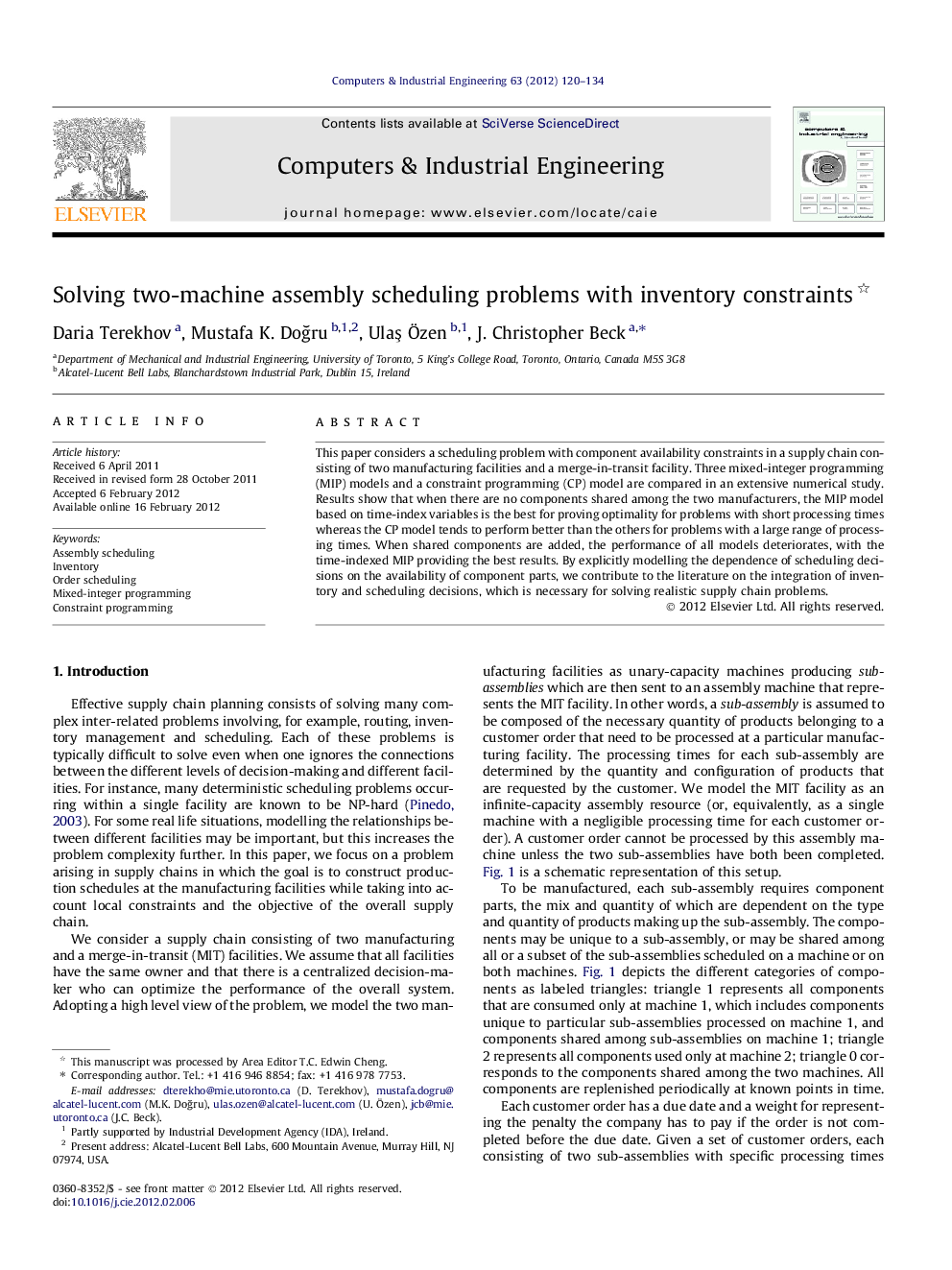| Article ID | Journal | Published Year | Pages | File Type |
|---|---|---|---|---|
| 1134984 | Computers & Industrial Engineering | 2012 | 15 Pages |
This paper considers a scheduling problem with component availability constraints in a supply chain consisting of two manufacturing facilities and a merge-in-transit facility. Three mixed-integer programming (MIP) models and a constraint programming (CP) model are compared in an extensive numerical study. Results show that when there are no components shared among the two manufacturers, the MIP model based on time-index variables is the best for proving optimality for problems with short processing times whereas the CP model tends to perform better than the others for problems with a large range of processing times. When shared components are added, the performance of all models deteriorates, with the time-indexed MIP providing the best results. By explicitly modelling the dependence of scheduling decisions on the availability of component parts, we contribute to the literature on the integration of inventory and scheduling decisions, which is necessary for solving realistic supply chain problems.
► We consider a supply chain with two manufacturers and a merge-in-transit facility. ► We model scheduling in this setting as an assembly scheduling problem with inventory. ► We present complete approaches for the assembly scheduling problem with inventory. ► Our models are shown to be effective for problems without shared components.
